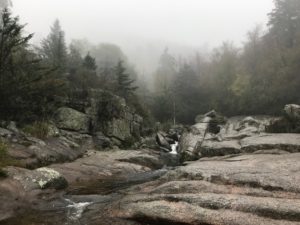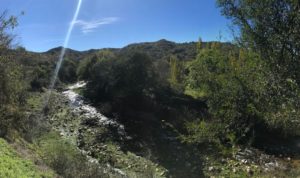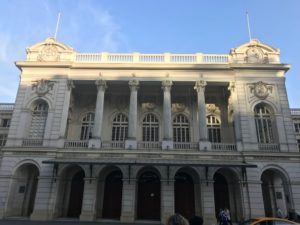Córdoba was one of the first Spanish colonial capitals in Argentina and lies at the foothills of the Sierras Chicas. It is a student city with one public university and several private universities (4 to 8, I am not sure of the exact number). There are about 360,000 students in Córdoba and many students from throughout Latin America because the public National University of Córdoba is free and very good. However, it is not a touristy city for those outside of LatAm. The touristy areas, such as La Cumbrecita, get many tourists from Argentina, but not so much from outside – which made it the perfect month to really practice my Spanish 🙂
Parent’s Visit
As Anne pointed out, this also meant we were one of the few people driving that day and didn’t hit any traffic. Always look at the bright side 🙂
Louie therefore suggested going to a town, as there would be more to see. We went to La Cumbrecita, which was founded by 2 Swiss brothers at the beginning of the 20th century. The pine trees are not native to the Sierras, but were planted by the brothers.
This is the one waterfall we were able to walk to, after having coffee and cake at Cafe Lisbetta.
Horse-back riding in the Sierras
The following weekend, after the parents left, we went horse-back riding in the Sierras. The family that showed us around has lived there for several generations and ended the day with showing us how to dance to folklore after a delicious asado.
La Cumbrecita 2
Mountain Biking
The river is called river of gold because of iodine in the water that glitters gold in the sun. The church is built in the Jesuit style. This particular one was not built by the Jesuits, but did have a Jesuit priest perform the ceremony. There are five other villages in the area (estaciones) that are UNESCO world heritage sites – this one didn’t make the cut because it was built and is owned privately by a family.
The Jesuits were very successful. In Argentina, this was in part because they worked well with the indigenous population and although owned slaves, treated them humanely. The Spanish became wary of their power and threw them out of the country in the latter half of the 18th century. The lands that had belonged to the Jesuits were given to friends of those in power, who had no idea how to govern the lands, ran them into the ground and treated the indigenous people and slaves poorly.
Santiago
In between Córdoba and Lima, Peru, I stopped over in Santiago for 2.5 days. I really wish I could have stayed longer and look forward to visiting again.
Santiago experiences many earthquakes, so new is very often next to old.
The opera house that I didn’t have time to see an opera in. You can get really cheap tickets … but then must use the side entrance 🙂
The wall street of Santiago – Nueva York street, built in the 1920s.
And finally, a mash-up of the month.













